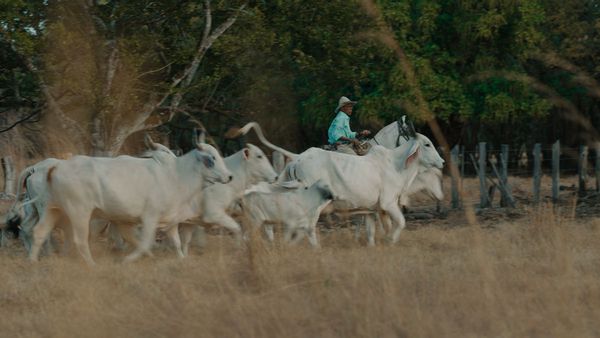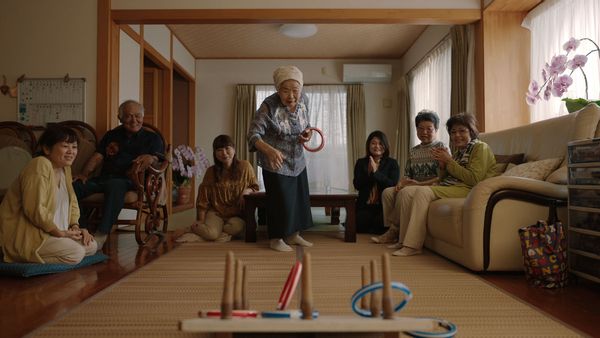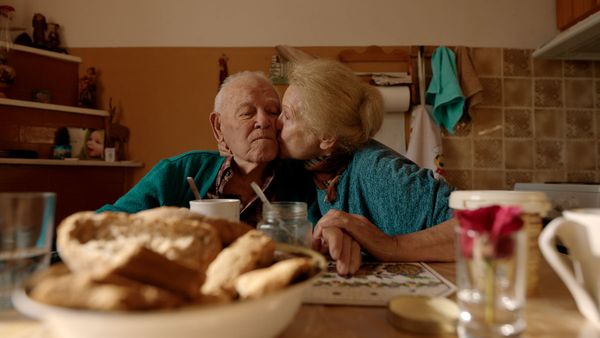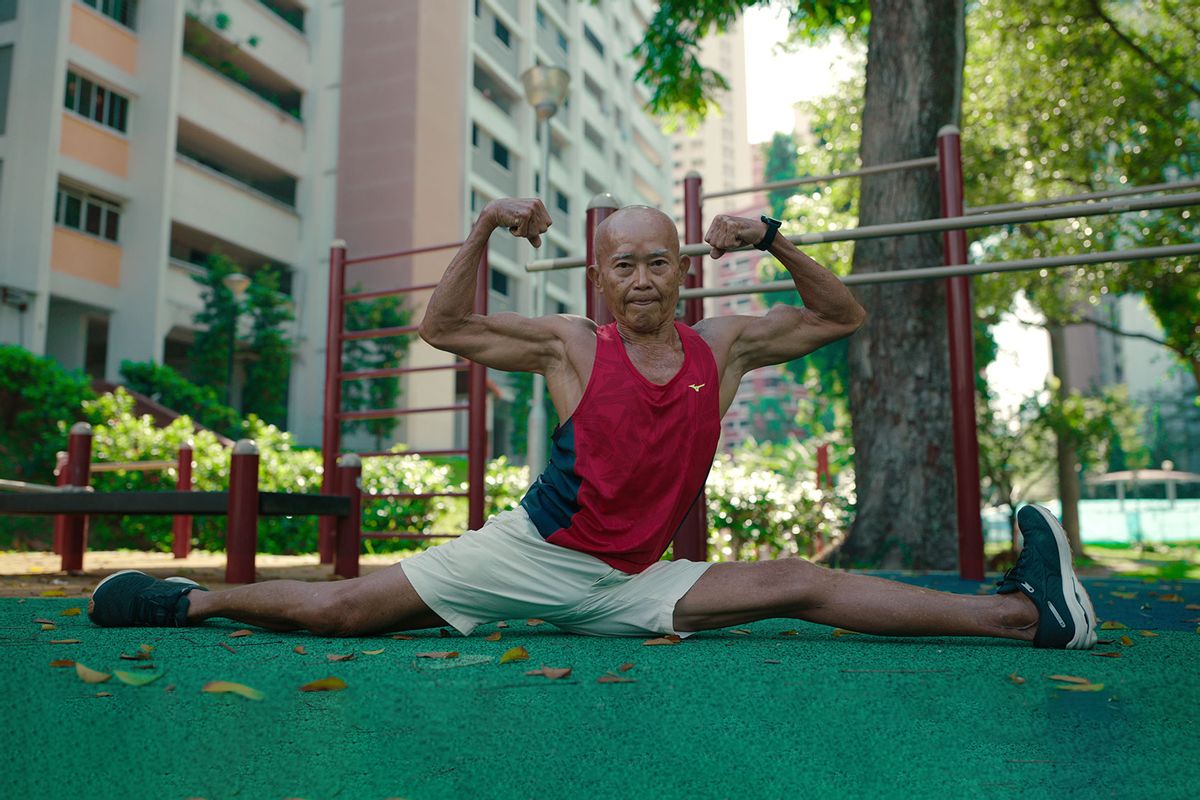Making it to your 100th birthday is a noble goal — it might net you a shout-out on "Today" or "Good Morning America," for example — but it frightens a fair share of us, too. Americans associate advanced age with physical frailty and an assortment of diseases and impairments presumed to be inevitable. Common thinking tells us that if we do live that long, our quality of life may not make the effort worthwhile.
Journalist, author, and lifelong cyclist Dan Buettner has spent more than 20 years accumulating evidence to the contrary, showcased in Netflix's four-part documentary series "Live to 100: Secrets of the Blue Zones" and his latest book, "The Blue Zones Secrets for Living Longer: Lessons From the Healthiest Places on Earth." One goes hand-in-hand with the other but seeing the results may be more effective than simply reading the findings.
"Live to 100" introduces us to elders in Japan, Europe, Central America and Southern California living vibrant lives that include physical activity, socializing, cultivating a purpose and, perhaps best of all, enjoying flavorful whole foods and — hooray — wine.
One centenarian is shown herding livestock while riding on horseback. Another plays a stringed instrument with acuity and ease, laughing and smiling throughout. Buettner himself is proof in advertising, a man who consumes a plant-based diet, still uses a bicycle as his chosen means of transportation other than walking, and looks younger than his 63 years.
By teaming up with National Geographic and the National Institute on Aging to study the demographically confirmed areas geographically defined as "Blue Zones," Buettner and his partners distilled the secrets of longevity into a few very simple and essential lifestyle choices. The Netflix series is a manifestation of something he says he avoided for 20 years: making a documentary about his work. "It wasn't until we had this team, and the director Clay Jeter, who really understood it," he said in a recent Zoom interview, explaining that he want to avoid "the pop-y quick fix, the hyperbole that most longevity or anti-aging is surrounded with."
 Ramiro Guadamuz, age 100 in "Live to 100: Secrets of Blue Zones" (Netflix)As a bonus, he enlisted the film crew from "Chef's Table" to create what he describes as "for lack of a better term, longevity porn. Just making it look so aspirational. So beautiful. Because these ideas are subtly powerful."
Ramiro Guadamuz, age 100 in "Live to 100: Secrets of Blue Zones" (Netflix)As a bonus, he enlisted the film crew from "Chef's Table" to create what he describes as "for lack of a better term, longevity porn. Just making it look so aspirational. So beautiful. Because these ideas are subtly powerful."
Part of the series' attractiveness has to do with its featured locations. The Blue Zones span the globe and include Okinawa, Japan; Sardinia, Italy; Ikaria, Greece; and Nicoya, Costa Rica. Vastly different places, each of which boasts higher percentages of the local population living well into their 80s, 90s and beyond. Regardless of their geographic and cultural differences, a commonality is their older population experiences lower occurrences of cancer, dementia and other ailments relative to the elderly population elsewhere, including in most of the United States.
The overall life expectancy in the United States has declined to 76.4 years, according to CDC data dated to December 2022, the lowest level since 1996. Experts list a number of reasons for this including a loneliness epidemic that's been deemed a public health crisis.
People in Blue Zones live longer due to an assortment of factors associated with the usual suspects, meaning diet and activity level. Still, these are the first regimens Buettner is likely to be questioned about – what should we eat, and what shouldn't we? Should we take up jogging? As Buettner tells anyone who asks, there is no single magic bullet to ensuring healthy longevity. It's more like buckshot — a "constellation of mutually supporting factors," as he calls them, that contribute to overall wellness.
Buettner's work has taken him into communities across the United States to seed more Blue Zones here. America already boasts a Blue Zone in Loma Linda, California, a Seventh-Day Adventist community that follows a health-forward lifestyle guided by faith.
His quest also made us curious as to whether American politics is an obstacle to adopting the Blue Zones approach. In the U.S. meat consumption is viewed as a cornerstone of partisan identity, and the beef industry has a powerful lobbying arm. When the Obamas launched campaigns to counteract child obesity, including passing legislation to promote healthier school lunches and more transparency in food labeling, Republican leaders accused Michelle Obama of attempting to implement a "nanny state."
Presumably then, conservative towns and states would be more resistant to implementing Blue Zone habits. But Buettner's experience defies that assumption, as he explained in a wide-ranging interview where we discussed the politics of America's health habits along with what he believes are the secrets to living longer, healthier lives.
The following interview transcript has been edited for length and clarity.
One of the things that you demonstrate through the series is that people are just living their lives. They're not simply lifestyles, but their health is related to day-to-day living, in the choices they make.
I feel like whenever there's any provable kind of mission that says, "This can work, if you can simply do these simple things," there's a reaction that's almost negative. Maybe that's my interpretation due to the politicizing of eating in this country.
I'm thinking about when the Obamas, for instance, had a vegetable garden at the White House and talked about there was a backlash when the suggestion was so simple: "Plant a garden." The same kind of thing that you're talking about. Is that resistance something you're encountering as you're doing this tour? Does that factor it all into different communities and their acceptance of the Blue Zones method?
Well, you just gave me about five questions. Let me answer some of them sequentially.
First of all, these people aren't making better decisions than we are. They're not better people, they're not smarter or wiser than we are. But they do live in this very special environment that has evolved over the centuries to engineer their micro decisions in such a way they add up to a much healthier day.
The cheapest and most accessible foods are peasant foods, which are inexpensive, or in their garden. It's much easier and cheaper to walk to work or your friend's house or out to eat. It's much easier to socialize with your neighbor than it is to implode in your house and be on your handheld device. Having a sense of purpose comes with mother's milk.
There is no single magic bullet to ensuring healthy longevity. It's more like buckshot.
The bigger point is that it's all transportable. It's hard for Americans because we're so relentlessly marketed the quick fix or the pill or the supplement or the super food or the longevity hacker or stem cells. None of those work. But we know we look at the data: I didn't just travel to these places. I spent three years working with demographers to identify these places where you find people who live a long time because they're not getting Type 2 diabetes, they're not getting cardiovascular disease, breast cancer, prostate cancer, anywhere near the rate that we are in America. And they're doing it because of this constellation of mutually supporting factors.
They're eating mostly a whole food plant-based diet for the long run, because their life is underpinned with purpose. They have a small social circle of friends that reinforce those behaviors. And they live in places where the healthy choice is the easy choice.
By the way, the Obamas — I mean, they were right-minded. But there was too much political headwind for them to take on the big beverage and the big food companies and make a real difference.
 Umeto Yamashiro, age 101 in "Live to 100: Secrets of Blue Zones" (Netflix)If you're overweight and unhealthy in America, it's probably not your fault. And I'll tell you why. In 1980, we had a third as many people who are obese as we do today. We had a seventh as many people were suffering from Type 2 or pre-diabetes than we do today. Is that because people in the 1980s were smarter, or more disciplined or better humans? No. Our food environment has changed . . . We live in this environment of overabundance and ease where we're relentlessly marketed to do things that aren't all that good for us. And that's the problem. And it's not going to get any better until we shift the paradigm and stop trying to think we're going to change Americans behaviors. We're not going to change 330 million Americans' behaviors. But we can change their environments.
Umeto Yamashiro, age 101 in "Live to 100: Secrets of Blue Zones" (Netflix)If you're overweight and unhealthy in America, it's probably not your fault. And I'll tell you why. In 1980, we had a third as many people who are obese as we do today. We had a seventh as many people were suffering from Type 2 or pre-diabetes than we do today. Is that because people in the 1980s were smarter, or more disciplined or better humans? No. Our food environment has changed . . . We live in this environment of overabundance and ease where we're relentlessly marketed to do things that aren't all that good for us. And that's the problem. And it's not going to get any better until we shift the paradigm and stop trying to think we're going to change Americans behaviors. We're not going to change 330 million Americans' behaviors. But we can change their environments.
You touched on something that I think other Blue Zones around the world, except for maybe Loma Linda, don't contend with, which is the lobbying arm of the food industry in our country. In the series you talk about going into Texas, and you went into Phoenix [Ariz.]
Fort Worth, and Phoenix. Right.
Texas is a huge beef industry state. Typically in a lot of these Blue Zones, when people who eat meat indulge, it's very sparingly versus in America where meat is on the table at least once a day for people, if not at every meal. Did you encounter any resistance?
Yeah. I remember in Fort Worth, I was at a big final meeting with the head of the health care system, the big CEOs, the head of the Chamber of Commerce, the mayor. And I gave them my presentation, that we want to make the healthy choice the easy choice.
And there immediate responses were, "I don't know, sounds like it's a nanny state effort." Another guy said, "Yeah, it looks like they're trying to limit our freedoms." And I shut my computer and said, "Thank you very much. I don't think the city is ready." And the mayor — Betsy Price at the time, a very strong character and principled person – said, "I don't know, I think we ought to give Dan a chance."
We need your help to stay independent
It was her throwing her political equity in that gave us five years. We had a staff of 30 people. And we went about working with the city council — not telling them what to do but showing them evidence-based policies that favor healthy food over junk food, that favor the pedestrian over the motorist, that favor the non-smoker over the smoker.
And it was very easy to identify 15 or so policies that my team got implemented. We went to every restaurant, grocery store, workplace, school and faith-based community with an opportunity to become Blue Zone certified. And that means they optimize their policies, and they optimize their design so people unconsciously make better food and movement and social decisions. Now we got about 20 or 30% of all those places certified. We didn't get 100. But those 20% exerted a big influence on what the community did. This gentle pressure relentlessly applied over five years, we lowered their obesity rate or BMI by some 3-6% depending on the demographic. They themselves reported to us that they expected a quarter of a billion dollars in healthcare cost savings that our project occasioned.
That's the reddest city of the reddest state in America. If they can do it there . . .
Anyway, regardless of politics, it tends to be the most conservative cities that have been quickest to adopt this. And that completely surprised me, I thought it was going to be the Oaklands or Boulder, Colorados. But as it turns out, in conservative communities the public sector and the private sector seem to work very well together. And it's not until you get a handshake between both of those that you can really get a Blue Zone [underway].
Why do you think that in the bluer cities like the ones you just mentioned have been more of a challenge?
"I wanted the show, first of all, to remind Americans that most of us can live an extra decade if we optimize our life, and that the Blue Zones approach is actually an enjoyable way of getting there."
Well, we've been in 72 American cities, and when I think of the biggest ones, they tend to be conservative. We're politically agnostic, in that this works for all people. It's a population-wide intervention, which keeps us above the fray. The mayor of New York City has actually been talking with us, so who knows? We may be in New York. But I don't know why. It's just it seems that it's a big commitment to make your entire city focus on a healthier environment or a healthier living environment. And for whatever reason, conservative cities have been better at putting it all together.
It should be a federal thing, by the way.
 Live to 100: Secrets of Blue Zones (Netflix)I have a theory about blue cities, since I live in one of the bluest cities, Seattle, in what is one of the bluest states in the nation. I wonder whether it may be that people are thinking "Well, we're already living this way. We already have access to plant-based diet and great produce, so what is it that I should be doing differently?"
Live to 100: Secrets of Blue Zones (Netflix)I have a theory about blue cities, since I live in one of the bluest cities, Seattle, in what is one of the bluest states in the nation. I wonder whether it may be that people are thinking "Well, we're already living this way. We already have access to plant-based diet and great produce, so what is it that I should be doing differently?"
I don't have much or any research that shows that blue cities are healthier than red cities. Maybe slightly. Still Seattle, three-fourths of people there are obese or overweight. There's still traffic problems. The chronic disease load there isn't much better than it is in a red city.
. . . I don't want to say the city, but they a big city considered us and you know, the agenda at the time —and I don't blame them, it was right after George Floyd was murdered — this city had Black Lives Matter [chapter], and they wanted to know what Blue Zones could do to improve the disparity. And I had to say nothing. We're not a disparity-fixing project. What we're good at is scoping the defaults, the nudges in your community, so people socialize more, they eat better, they move more, they smoke less. But it's not a panacea.
I do believe, however, the more you can connect people socially, the more social problems go away. And the more you can connect people socially, the rates of depression go down, the rates of suicide go down. It's much harder to be mean to a neighbor whose name you know than a stranger.
Want a daily wrap-up of all the news and commentary Salon has to offer? Subscribe to our morning newsletter, Crash Course.
Regarding what that representative from Black Lives Matter asked about narrowing disparity: I'm not inside that person's head. But even coming into this interview, I had a question that I suspect may have informed what this person may have asked, which relates to the topic of food deserts. That's a problem in a lot of larger cities. If someone is living in a food desert, what would you tell them in terms of what they can do to implement Blue Zone habits into their lives?
So just to be clear, we were asked to tackle the diversity issue or ethnic racial disparity issue. We can't do that. But a Blue Zone project that's been very successful in Fort Worth [is] we help find the money for bodegas or these convenience stores to put coolers in so that they have access to fresh fruits and vegetables. And it turned out to be a boon for the bodega owner.
So we do have a method, we do have a strategy for food deserts. But more important than that, we are so misguided in America in thinking that eating healthy is expensive that "I gotta go to some boutique grocery store and buy organic foods."
It turns out — and by the way, a lot of convenience stores have this as well – that if you have a bean and a grain, these are cheap peasant foods and the cheapest foods in the grocery store and the convenience store. Beans and rice, you know, with a can of tomato paste, or tomato sauce, which you can also get a convenience store, and some herbs, a little bit of all that makes a delicious meal. And it's got all the protein you need. Black beans? Dirt cheap. Corn tortillas, those together a whole protein, all the amino acids necessary for human sustenance, full micronutrients, full fiber. We're marketed this idea that we have to have a Whole Foods in order to be healthy. We don't. What we need is access to some beans and some grains and, you know, being able to get online and download a few whole food, plant-based recipes.
What are you hoping that people will take away from watching your Netflix series?
I wanted the show, first of all, to remind Americans that most of us can live an extra decade if we optimize our life, and that the Blue Zones approach is actually an enjoyable way of getting there. Having friends. Having a glass of wine with your friends. At the end of the day, knowing and living out your purpose. Eating healthy. These things feel good. And I want people to realize that this is available to them. And I'd also love it if our city council people are paying attention, and our federal politicians are paying attention, because it's within their means within half a dozen years to make a healthier America. But it relies on shifting the focus from beating the dead horse of individual responsibility to setting up Americans for success by designing their environment for health.
"Live to 100: Secrets of the Blue Zones" is streaming on Netflix.



Shares